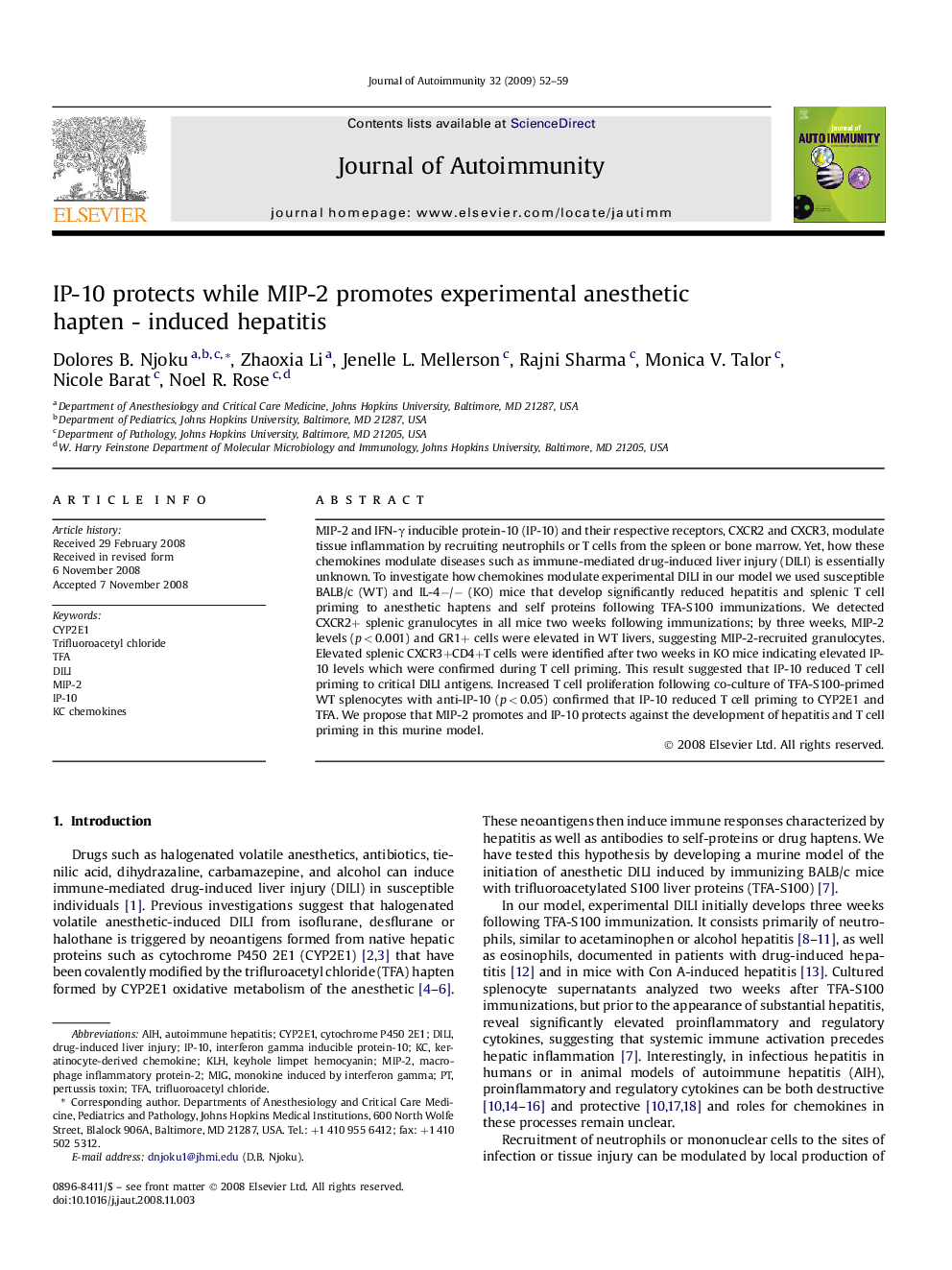| Article ID | Journal | Published Year | Pages | File Type |
|---|---|---|---|---|
| 3368290 | Journal of Autoimmunity | 2009 | 8 Pages |
MIP-2 and IFN-γ inducible protein-10 (IP-10) and their respective receptors, CXCR2 and CXCR3, modulate tissue inflammation by recruiting neutrophils or T cells from the spleen or bone marrow. Yet, how these chemokines modulate diseases such as immune-mediated drug-induced liver injury (DILI) is essentially unknown. To investigate how chemokines modulate experimental DILI in our model we used susceptible BALB/c (WT) and IL-4−/− (KO) mice that develop significantly reduced hepatitis and splenic T cell priming to anesthetic haptens and self proteins following TFA-S100 immunizations. We detected CXCR2+ splenic granulocytes in all mice two weeks following immunizations; by three weeks, MIP-2 levels (p < 0.001) and GR1+ cells were elevated in WT livers, suggesting MIP-2-recruited granulocytes. Elevated splenic CXCR3+CD4+T cells were identified after two weeks in KO mice indicating elevated IP-10 levels which were confirmed during T cell priming. This result suggested that IP-10 reduced T cell priming to critical DILI antigens. Increased T cell proliferation following co-culture of TFA-S100-primed WT splenocytes with anti-IP-10 (p < 0.05) confirmed that IP-10 reduced T cell priming to CYP2E1 and TFA. We propose that MIP-2 promotes and IP-10 protects against the development of hepatitis and T cell priming in this murine model.
